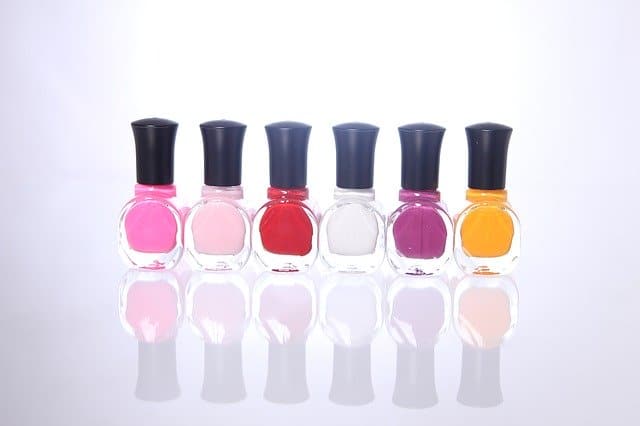Is it OK to paint over wet caulk?
When it comes to home improvement projects, caulking plays a crucial role in sealing gaps and preventing water damage.
However, there may be instances where you find yourself wondering whether it’s safe to paint over wet caulk. In this article, we will explore the ins and outs of this topic and provide you with all the necessary information to tackle this common dilemma.
The Answer: Can You Paint Over Wet Caulk?
No, it is not recommended to paint over wet caulk. Wet caulk needs time to cure and fully adhere to the surfaces it is sealing. Painting over it prematurely can lead to poor adhesion, compromising the effectiveness of the caulk and the paint job.
In simple terms, wait until the caulk is completely dry before attempting to paint over it. Patience is key to achieving a successful and long-lasting outcome.
Understanding Caulk Curing and Drying Time
To better understand why painting over wet caulk is a bad idea, let’s delve into the concept of caulk curing and drying time.
- Curing Time: Caulk curing refers to the process of the caulk reaching its maximum strength and stability. This process can take anywhere from 24 hours to several days, depending on the type of caulk and environmental conditions.
- Drying Time: Drying time is different from curing time. It refers to the time it takes for the water or solvent in the caulk to evaporate, allowing the caulk to harden and form a protective seal. Drying time is relatively shorter than curing time, typically ranging from 1 to 6 hours.
It is crucial to understand these timeframes to ensure you give the caulk enough time to cure and dry properly before proceeding with painting.
What Kind of Caulk Can You Paint Over?
Certain types of caulk are more suitable for painting than others. Acrylic latex caulk and silicone-based caulk are two common options that can be successfully painted over.
- Acrylic Latex Caulk: This type of caulk is commonly used for interior and exterior applications. It can be painted over once it has dried completely, usually within 1 to 2 hours. Acrylic latex caulk is paintable with both water-based and oil-based paints, making it a versatile option for various projects.
- Silicone-Based Caulk: Silicone caulk is known for its excellent waterproofing properties and flexibility. While it can be painted over, it requires special preparation. You’ll need to use a primer designed for use with silicone caulk before applying paint. Additionally, ensure the silicone caulk is fully cured before painting, which may take up to 24 hours or more.
How Long After Caulking Can I Shower?
If you’re dealing with caulking in a bathroom or shower area, you might be wondering how long to wait before using the shower. The answer depends on the type of caulk used.
- Acrylic Latex Caulk: As mentioned earlier, acrylic latex caulk dries within 1 to 2 hours and cures in about 24 hours. Therefore, it is generally safe to use the shower 24 hours after caulking.
- Silicone-Based Caulk: Silicone caulk requires more time to cure completely. It is recommended to wait at least 24 hours, if not longer, before using the shower to allow the caulk to cure properly.
How Long Should You Let Caulk Dry?
The drying time for caulk varies based on the type of caulk and environmental factors. Here are some general guidelines:
- Acrylic Latex Caulk: As mentioned earlier, acrylic latex caulk typically dries within 1 to 2 hours. However, it is best to wait 24 hours before subjecting it to heavy use or painting over it to ensure it has fully cured.
- Silicone-Based Caulk: Silicone caulk dries relatively quickly, usually within 30 minutes to 1 hour. However, remember that drying time is different from curing time. Wait at least 24 hours before painting over it or using it in wet environments.
Always check the manufacturer’s instructions on the caulk tube for specific drying and curing times, as they may vary based on the brand.
Do You Have to Wait 24 Hours for Caulk to Dry?
Waiting for 24 hours is a general guideline for most caulks, but the actual drying time may vary depending on environmental factors such as temperature and humidity. It is essential to consider these factors when determining the readiness of the caulk.
High humidity and low temperatures can slow down the drying process, while warm and dry conditions can expedite it. If you are caulking in a humid or cold environment, consider giving the caulk a little extra time to dry before proceeding.
What Happens If Caulk Gets Wet Before It Cures?
Exposing wet caulk to moisture before it cures can lead to several issues. Here are some potential consequences:
- Compromised Adhesion: Wet caulk that comes into contact with water or moisture may not adhere properly to the surfaces it is sealing. This can result in leaks and reduced effectiveness.
- Discoloration and Staining: Wet caulk can become discolored or stained when exposed to water, which can affect the appearance of your caulk lines.
- Mold and Mildew Growth: Wet caulk can create a conducive environment for mold and mildew growth, especially in humid areas like bathrooms and kitchens.
- Longer Curing Time: If the caulk gets wet before it cures, it may take longer for the caulk to reach its maximum strength and stability.
To avoid these issues, it’s crucial to keep the caulked area dry and protected from moisture until the caulk has fully cured.
What Is the Fastest Way to Cure Silicone Caulk?
Silicone caulk requires patience to cure properly. However, if you’re looking for ways to speed up the process, here are some tips:
- Increase Temperature and Ventilation: Keeping the room warm and well-ventilated can help expedite the drying and curing process.
- Use a Dehumidifier: If you’re caulking in a humid environment, using a dehumidifier can help reduce moisture levels and accelerate the curing of silicone caulk.
- Curing Accelerators: Some manufacturers offer curing accelerators designed to speed up the curing time of silicone caulk. These products can be applied after caulking to hasten the process.
- Avoid Applying Thick Layers: Applying silicone caulk in thin, even layers can help it dry and cure more quickly.
Despite these measures, keep in mind that silicone caulk still requires at least 24 hours to cure fully.
Do You Have to Let Caulk Dry Before Painting?
Yes, you must let the caulk dry completely before painting over it. As mentioned earlier, painting over wet caulk can lead to poor adhesion, which can compromise both the caulk and the paint job.
Once the caulk has dried and cured according to the manufacturer’s instructions, you can proceed with painting. Ensure the caulked surface is clean, dry, and free from any dust or debris before applying paint.
How Do You Fix Sticky Caulk?
Sticky caulk can be a frustrating issue, but there are ways to address it. Here are steps to fix sticky caulk:
- Remove Excess Caulk: If there is excess caulk on the surface, use a caulk remover or a putty knife to carefully scrape off the sticky caulk.
- Use Isopropyl Alcohol: Dampen a clean cloth with isopropyl alcohol and gently rub the sticky caulk to help break down the adhesive properties.
- Allow Proper Ventilation: Ensure the area is well-ventilated to allow the caulk to dry properly and lose its stickiness.
- Consider Repainting: If the caulk remains sticky and does not dry properly, you may need to remove it entirely and reapply a fresh layer of caulk before painting.
What Paint Will Stick to Silicone Caulk?
Painting over silicone caulk requires a specific approach to ensure good adhesion. Here’s what you need to do:
- Use a Silicone Primer: Before applying paint, use a primer specifically designed for use with silicone caulk. This will create a suitable surface for the paint to adhere to.
- Choose the Right Paint: Opt for high-quality acrylic or latex paint. These types of paint are more likely to adhere well to the silicone caulk surface.
- Apply Thin Coats: Apply the paint in thin, even coats to prevent it from peeling or cracking over time.
- Allow Ample Drying Time: Give the paint enough time to dry between coats, as well as after the final coat, to achieve a durable and attractive finish.
By following these steps, you can successfully paint over silicone caulk and achieve a professional-looking result.
Conclusion
In conclusion, painting over wet caulk is not advisable. It is essential to wait for the caulk to dry and cure fully before proceeding with painting.
Understanding the different types of caulk, their drying and curing times, and the necessary precautions will ensure a successful caulk and paint job. Remember to use appropriate primers and paints for different caulk types to achieve the best adhesion and results.
By taking the time to properly prepare and execute your caulk and painting projects, you can enhance the longevity and performance of your home improvements.





